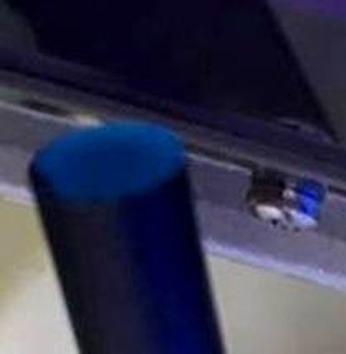当前位置:
X-MOL 学术
›
Electroanalysis
›
论文详情
Our official English website, www.x-mol.net, welcomes your
feedback! (Note: you will need to create a separate account there.)
Graphene Quantum Dots‐based Electrochemical Biosensor for Catecholamine Neurotransmitters Detection
Electroanalysis ( IF 2.7 ) Pub Date : 2018-04-15 , DOI: 10.1002/elan.201700825 Sylwia Baluta 1 , Anna Lesiak 1, 2 , Joanna Cabaj 1
Electroanalysis ( IF 2.7 ) Pub Date : 2018-04-15 , DOI: 10.1002/elan.201700825 Sylwia Baluta 1 , Anna Lesiak 1, 2 , Joanna Cabaj 1
Affiliation

|
An useful electrochemical sensing approach was developed for epinephrine (EP) detection based on graphene quantum dots (GQDs) and laccase modified glassy carbon electrodes (GC). The miniature GC biosensor was designed and constructed via the immobilization of laccase in an electroactive layer of the electrode coated with carbon nanoparticles. This sensing arrangement utilized the catalytic oxidation of EP to epinephrine quinone. The detection process was based on the oxidation of catecholamine in the presence of the enzyme – laccase. With the optimized conditions, the analytical performance demonstrated a high degree of sensitivity −2.9 μA mM−1 cm−2, selectivity in a broad linear range (1–120×10−6 M) with detection limit of 83 nM. Moreover, the method was successfully applied for EP determination in labeled pharmacological samples.
中文翻译:

基于石墨烯量子点的电化学生物传感器检测邻苯二酚神经递质
基于石墨烯量子点(GQD)和漆酶修饰的玻碳电极(GC),开发了一种有用的电化学传感方法来检测肾上腺素(EP)。通过将漆酶固定在涂有碳纳米颗粒的电极的电活性层中,可以设计和构造微型GC生物传感器。这种感测装置利用了EP催化氧化为肾上腺素醌。检测过程是基于在存在酶(漆酶)的情况下儿茶酚胺的氧化。在优化的条件下,分析性能显示出高灵敏度-2.9μAmM -1 cm -2,在宽线性范围内(1–120×10 -6)具有选择性 M),检测限为83 nM。此外,该方法已成功应用于标记药理样品中的EP测定。
更新日期:2018-04-15
中文翻译:

基于石墨烯量子点的电化学生物传感器检测邻苯二酚神经递质
基于石墨烯量子点(GQD)和漆酶修饰的玻碳电极(GC),开发了一种有用的电化学传感方法来检测肾上腺素(EP)。通过将漆酶固定在涂有碳纳米颗粒的电极的电活性层中,可以设计和构造微型GC生物传感器。这种感测装置利用了EP催化氧化为肾上腺素醌。检测过程是基于在存在酶(漆酶)的情况下儿茶酚胺的氧化。在优化的条件下,分析性能显示出高灵敏度-2.9μAmM -1 cm -2,在宽线性范围内(1–120×10 -6)具有选择性 M),检测限为83 nM。此外,该方法已成功应用于标记药理样品中的EP测定。











































 京公网安备 11010802027423号
京公网安备 11010802027423号